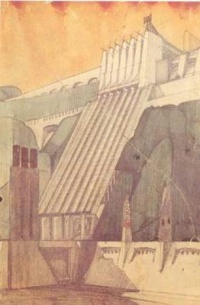1914
From The Art and Popular Culture Encyclopedia
|
"The incident [vandalism of the Rokeby Venus] has come to symbolize a particular perception of feminist attitudes towards the female nude; in a sense, it has come to represent a specific stereotypical image of feminism more generally." --The Female Nude: Art, Obscenity, and Sexuality (1992), p.35, Lynda Nead. |
|
Related e |
|
Featured: |
1914 (MCMXIV) was the 5th year of the 1910s decade.
This year saw the beginning of what became known as World War I, after Franz Ferdinand was assassinated by Gavrilo Princip.
Contents |
[edit]
Events
- July Crisis marks the start of World War I
- Suffragette Mary Richardson slashes the Rokeby Venus
- By 1914, Africa had only two independent nations, Liberia, a nation founded by free black Americans earlier in the nineteenth century, and the ancient kingdom of Ethiopia in East Africa.
[edit]
Visual art
- Glasarchitektur ("Glass Architecture") by Paul Scheerbart
- Centrale elettrica by Antonio Sant'Elia
- Werkbund Exhibition in Cologne
- The Box of 1914 by Marcel Duchamp
[edit]
Film
- Cabiria by Giovanni Pastrone
[edit]
Literature
- A Study of Thomas Hardy by D. H. Lawrence
- Tarzan of the Apes by Edgar Rice Burroughs is published as book
- "Grodek", a poem about World War I by Georg Trakl
- "Zang Tumb Tumb" by Filippo Tommaso Marinetti
- Der Doppelgänger by Otto Rank
[edit]
Births
- March 28 - Bohumil Hrabal, Czech writer (d. 1997)
- August 26 - Julio Cortázar, Argentine writer (d. 1996)
- Asger Jorn, Danish member of the Situationist International, and a prolific artist and essayist. (d. 1973)
- Mario Bava (1914-1980)
- William S. Burroughs (1914 - 1997)
- Marguerite Duras (1914 - 1996)
- Henri Langlois (1914 - 1977)
- Norman McLaren (1914 - 1987)
- Sun Ra (1914 - 1993)
[edit]
Deaths
- Ambrose Bierce (1842 – 1914)
- Theodor Kittelsen (1857 – 1914)
Unless indicated otherwise, the text in this article is either based on Wikipedia article "1914" or another language Wikipedia page thereof used under the terms of the GNU Free Documentation License; or on research by Jahsonic and friends. See Art and Popular Culture's copyright notice.


